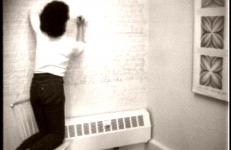
The ninety interviews produced by Lyn Blumenthal and Kate Horsfield between 1974 and 1988 exhibit a level of intimacy and authenticity that is startling when contrasted to today’s media savvy world. These interviews, recorded on early video equipment, evidence an era when those under the spotlight were less conscious of projecting a perfect and mediated “image”, and more interested in sharing ideas, experiences and histories. Within these early tapes, Blumenthal and Horsfield’s interviewees thoughtfully answer questions about their lives and work in ways that are both surprising and enlightening, while detailing the artistic choices they make on a day-to-day basis.
These compelling interviews, often shot in black and white, reveal the development of each artist’s trajectory, from first deciding to become an artist, to developing a practice and establishing a career. Many of the interviews are taped with artists at a fairly early stage in their artistic development; some artists are re-interviewed after a period of several years, accentuating developments in ideas and methodologies. The productions are small in size, often recorded with only the artist, camera operator and interviewer present, allowing for the development of a remarkably intimate atmosphere, and revealing profound insights into the lives and work of the subjects.
Averaging an hour in length, the interviews are edited from the original footage in order to distil the content to the most important and relevant dialogue. The camera focuses close-up on the artist, with the interviewer out-of-frame, though their voices can be heard asking questions and seeking clarifications, and occasional cigarette smoke floats across the screen. This stripped down format ensures that the viewers’ attention is focused on the interviewee, and the dense and often complex descriptions of the creative process that each artist reveals.
The series ended with Lyn Blumenthal’s untimely death in 1988.
Vito Acconci (b. 1940) is known as a conceptual designer, installation and performance artist. In the 1960s he embraced performance in order to "define my body in space, find a ground for myself, an alternate ground from the page ground I had as a poet." Acconci’s early performances, including Claim (1971) and Seedbed (1972), were extremely controversial, transgressing assumed boundaries between public and private space and between audience and performer.
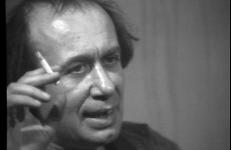
Chantal Akerman (1950-2015) gained international recognition with her three-and-a-half hour masterpiece, Jeanne Dielman, 23 Quai du Commerce, 1080 Bruxelles (1975), which portrays a housewife’s dull existence and eventual violent action. She has continued to be one of Europe’s most innovative filmmakers with more than forty film and television projects to her credit. Akerman’s work is minimalist, structuralist, and feminist. Major themes in her films include women at work and at home; women’s relationships to men, other women, and children; food, love, sex, romance, art, and storytelling. In this interview from 1976 Akerman discusses her early films, and the development of her particular vision.
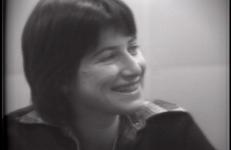
Laurie Anderson (b. 1947) began her career as a gallery artist specializing in photography, before moving to critical work as a writer for Art News and Art in America. She later returned to the art world, making groundbreaking multimedia performance art. Her most widely known work dates back to the early-to-mid-’80s, and is marked by an innovative use of technology in blending media-based and staged performance.
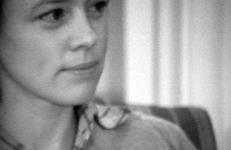
Through her performances and videotapes, Eleanor Antin (b. 1935) creates characters (King, Ballerina, Black Movie Star, and Nurse) while spinning tales that blur fiction and history. She avoids good taste and flaunts concealed intentions, forcing one to stretch all possible associations to the breaking point.
“I believe interesting art has always been conceptual... that it appeals to the mind. That does not mean that it cannot seduce and attract through the eye,” Antin says in this interview with Nancy Bowen.
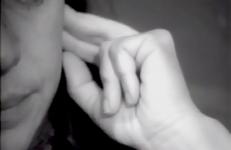
During her graduate studies at Hunter College, Alice Aycock (b. 1946) began to forge links between personal and more inclusive subject matter and form. In her quest for contemporary monuments, Aycock wrote her Master’s thesis on U.S. highway systems. Aycock’s large environmental sculptures create intense psychological atmospheres. Although she uses primitive rites and architecture as sources, her implementation of contemporary materials removes those specific connotations.
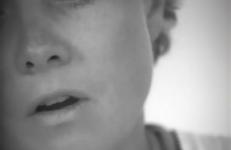
From his photo-text canvases in the 1960s to his video works in the 1970s to his installations in the 1980s, John Baldessari’s (b.1931) varied work has been seminal in the field of conceptual art. Integrating semiology and mass media imagery, he employed such strategies as appropriation, deconstruction, decontextualization, sequentiality, and text/image juxtaposition. With an ironic wit, Baldessari's work considers the gathering, sorting, and reorganizing of information.
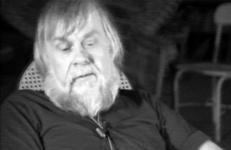
Jennifer Bartlett (b. 1941) is a writer and painter who makes large paintings with enamels on fabricated panels. She uses an overall grid structure on which she repeats images in a variety of styles ranging from lyric abstraction to childlike representation. Near the end of this interview with Kate Horsfield, she reads the chapter “Dreaming” from her book The History of the Universe (1985). “I decided: 1) I didn’t want to stretch a canvas again, 2) I wanted to be able to work on a lot of things at once. I didn’t want to exercise my own taste, which seemed boring and hideous. I wanted something modular, a constant surface."
A historical interview originally recorded in 1976, edited in 2010 with support from the Lyn Blumenthal Memorial Fund.
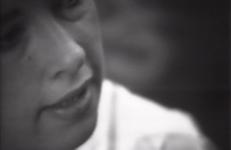
Joseph Beuys (1921–1986) was born in Kleve, Germany. After serving as a volunteer in the German military, Beuys attended the Dusseldorf Academy of Art to study sculpture, where in 1959 he became a professor. Much of his artwork reflects his attempt to come to terms with his involvement in the war. During the ’60s, Beuys became acquainted with the group Fluxus and artists such as Nam June Paik.
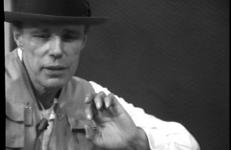
Louise Bourgeois (1911–2010) utilized wood, metal, plaster, and bronze in creating her sculptures. Among the many themes in her work are the house (or lair), the spider and the so-called “toi-et-moi” or “you and me.” These subjects derived from a self-defined problem in Bourgeois’s life, the desire to find and express a means of getting along with other people. For Bourgeois, the relationship of one person to another was all-important, and life had little meaning without it. Louise Bourgeois’s remarkable career spanned both the modern and postmodern eras.
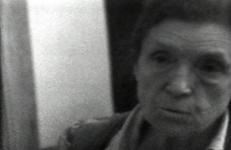
A major figure among underground filmmakers, Stan Brakhage (1933-2003) boasted a prolific career that spanned more than 50 years and 300 films. His personal, independent films range in length from nine seconds to several hours, and contemplate such fundamental issues as form, life, and death—most famously in Window Water Baby Moving (1959), Dog Star Man (1961-65), and The Act of Seeing with One’s Own Eyes (1971). His early writings and journals about filmmaking are collected in Metaphors on Vision (1976).
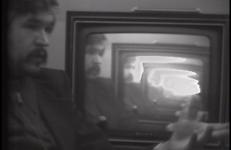
Phyllis Bramson (b.1941) is a Chicago painter whose post-imagist style emphasizes content and the deeply personal. Bramson’s paintings are private scenarios that include figures (or performers) who carry out highly charged activities with strong psychological meaning. They perform in highly theatrical, Oriental settings of almost cubist space and acid greens, yellows, and reds.
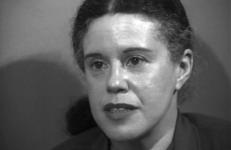
California-based painterJoan Brown (1938-1990) attended the California School of Fine Arts (now the San Francisco Art Institute). Brown has long been recognized as one of the most important artists to emerge from the creative milieu of the San Francisco Bay Area of the late 1950s. She created a body of work distinguished by its breadth and personal vision. Brown’s style incorporated abstract expressionism and figurative painting. One of California's pre-eminent figurative artists, she died in at the age of 52, in India.
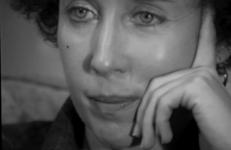
Roger Brown's (1941-1997) quirky, stylized paintings were influenced by such disparate sources as comic strips, hypnotic wallpaper patterns, medieval panel paintings, and early works of Magritte. His work is epitomized by a series of claustrophobic urban scenes with their drop-curtain-like gray clouds and cardboard-box apartment buildings, suggesting an amalgamation of boyish enthusiasm for model making and adult despondency. In 1996 he donated his apartment, complete with all of his belongings, artworks, writings, and automobile to the School of the Art Institute in Chicago, where it is on public display.
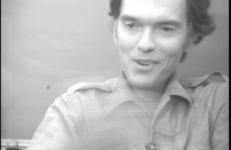
Rudy Burckhardt (1914-1999) was best known as a photographer and filmmaker. He moved to New York from his native Basel in 1935 at age 21. He shot portraits of many artists for Art News during the 1950s and early ’60s, capturing their work methods in candid and intimate photos. His films, frequently portraying cityscapes and urban life, include The Pursuit of Happiness (1940), Under the Brooklyn Bridge (1953), What Mozart Saw on Mulberry Street (1956), Square Times (1967), and Inside Dope (1971).
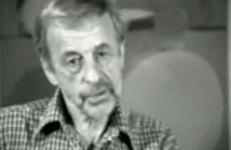
Judy Chicago (b.1939) is an artist, author, feminist, educator, and intellectual whose career now spans four decades. In 1974, Chicago turned her attention to the subject of women’s history to create her best known work, The Dinner Party, which was executed between 1974 and 1979 with the participation of hundreds of volunteers. This monumental multimedia project, a symbolic history of women in western civilization, has been seen by more than one million viewers during its 16 exhibitions held at venues spanning six countries.
